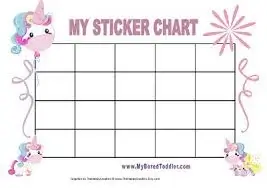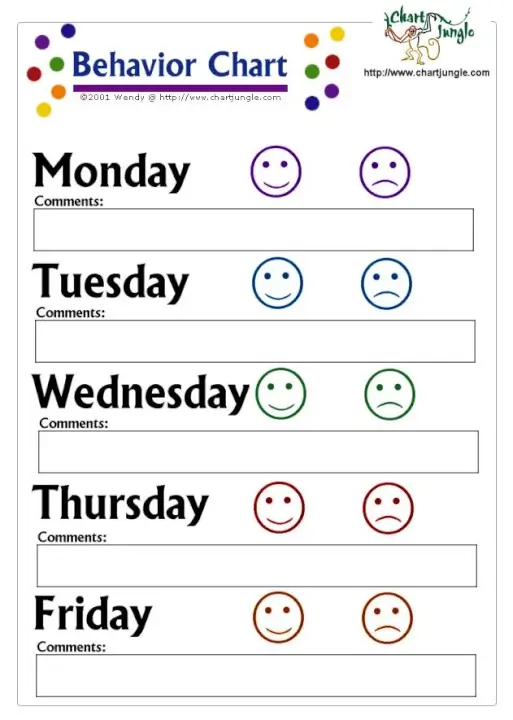Managing a kindergarten classroom can be an arduous task, but it is much simpler through the right equipment. One such piece of equipment is a kindergarten behaviour chart. This article explores the importance of behaviour charts, how to make them work for you and 10 proven ways to be successful. If you are a teacher or parent, you will find tips here to help you manage child behaviour more effectively.
What does Kindergarten Behavior Charts mean?
A visual tool used in monitoring and promoting positive behaviors among young children, this is what is referred to as the kindergarten behavior chart. It usually entails rewards and penalties systems that reinforce good conduct while addressing unwelcome actions. These could range from simple sticker or color systems to more complicated ones with different levels and payoffs.
Benefits of using Kindergarten Behavior Charts
Better Classroom Management
Behavior charts provide guidelines that help teachers establish discipline within their classes. Consistency can significantly reduce disruptive behaviors.
Increased student motivation

Children are driven by visuals depicting progress and rewards they can touch. A behaviour chart will make them want to demonstrate good behaviour even more.
Clear Communication
These charts are used to facilitate the transmission of information from teachers to students and parents. They also provide a clear history of the student’s conduct.
Various kinds of Kindergarten Behavior chart
Sticker Charts

Simple but highly effective, sticker charts have children accumulate stickers for their good behavior with a bigger prize in mind.
Color Coded Charts
For example, green color can be considered as a signal for good behavior, yellow could imply warning while red signifies bad behavior). Children can easily tell how they are behaving by just looking at this visual clue.
Clip Charts
Children will have their own clip on the chart that they can move up or down depending on their behavior. This feature is quite interactive especially if it involves young ones.
Point Systems
Good conduct earns children points that can be redeemed for various rewards. Essentially, this system teaches little math while attempting to organize behaviors.
Ways of Making Kindergarten Behavior Chart Successful
Make Expectations Clear
State what behaviors you want to encourage and discourage. Ensure that these are suitable for kindergarteners, and age –friendly.
Select the Appropriate Chart
Settle on a behavior chart that is most applicable to your class and understandable by your students. Children should be kept in mind when designing such charts.
Explain the Chart to Students
Make your students aware of this chart. Tell them how it works; rewardable conducts are; bad ones result in punishment.
Continuously Monitor and Amend
Keep updating the chart regularly to be sure about the rewards and punishments consistency for reinforcing expectations of conduct.
Talk to Parents
Parents should know about their children’s progress. They may receive daily reports or weekly summaries, attend parent-teacher conferences.
10 Strategies that Will Ensure Success – Proven
Emphasize Positive Reinforcements
Encourage the repeating of good behaviour while minimizing punishment for negative actions.
Set Realistic Goals

Frustration and demotivation arise from unrealistic expectations about the set goals.
Be Consistent
To avoid confusion, ensure you are consistent in applying the similar consequences and standards everyday.
Engage with children
Allowing the children to come up with the chart motivates them to engage fully in it.
Use Non-verbal Praise alongside Verbal Praise
When combined with verbal praise, use of this chart ensures that you recognize good behaviors verbally.
Make It Simple
Avoid very complex charts so as to make it easy for young children to understand and adhere to the system.
Regular Updates to Parents
This helps keep parents informed on their child’s progress thus extending behaviour management into the home environment too.
Use Different Kinds of Rewards
In order to maintain interest, rewards must be changed frequently which might include small toys, extra play or special rights and privileges.
Address Negative Behavior Calmly
Address bad behavior calmly and clearly explain the consequences. Do not allow your frustration to be expressed or anger shown.
Review and Adapt
Check how well the chart is working from time to time. Be open to change where necessary for the betterment of your class.
Common Mistakes Not To Make
Overdoing The Chart
Children may find it hard to understand a complicated system. Let it be simple and straight forward.
Lack Of Consistency
Inconsistent enforcement of rules and rewards might puzzle kids as well as undermine the effectiveness of a chart.
Neglecting Individual Variations
Each child is quite different from others in numerous ways, so adjust your behavior based on individual needs and responses to this chart.
No Involvement Of Parents
Parents are critical stakeholders in managing children’s conduct; they should participate in these activities through having knowledge about the chart as well as their children’s accomplishments in general terms.
Preoccupation with Bad Behavior
Too much focus on negative conduct is disheartening. Counterbalance it with good behavior appreciation that one deserves more often than not.
Conclusion
The control of a child’s conduct in a class is highly effective when handled with the aid of a kindergarten behavior chart. You can set this up by creating clear-cut anticipations, offering constructive reinforcement and maintaining regularity. By applying these ten strategies which have shown success, you will have an efficient as well as an interesting behavior chart for your students. If done correctly, a behaviour chart will greatly enhance both classroom management and student behaviour making the learning experience much more gratifying for all concerned.
FAQs About Kindergarten Behavior Charts
When is the right time to start using behavior charts?
Behavior charts can be introduced as early as preschool, around ages 3-4, but they are particularly effective in kindergarten, when children are better able to understand the system.
What should I do if I have students that do not respond to a behavior chart?
Consider talking with them one-on-one, rewarding them according to their personal tastes or involving child psychologist in case of any difficulties.
Can behavior charts be used at home?
Behavior charts can also work effectively at home. They help establish continuity between home and school environments.
My child’s behavior has worsened since I started using this chart; what should I do now?
Reconsideration on your approach and the chart itself. Goals should be attainable and reinforcement should be positive rather than negative punishments.
How often do we update this behaviour chart?
Make sure the children are actively involved by updating it daily to reflect current conduct.

Russell F. Jones, holding a Master in psychology from the University of Florida. He writes for Smart Parent Solutions, offering practical advice on parenting and child development. His engaging content helps parents navigate family life with confidence and ease. Russell enjoys sharing his knowledge and spending quality time with his family.
